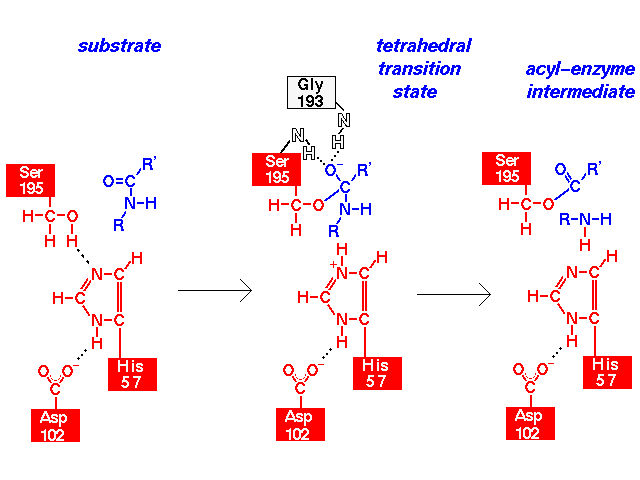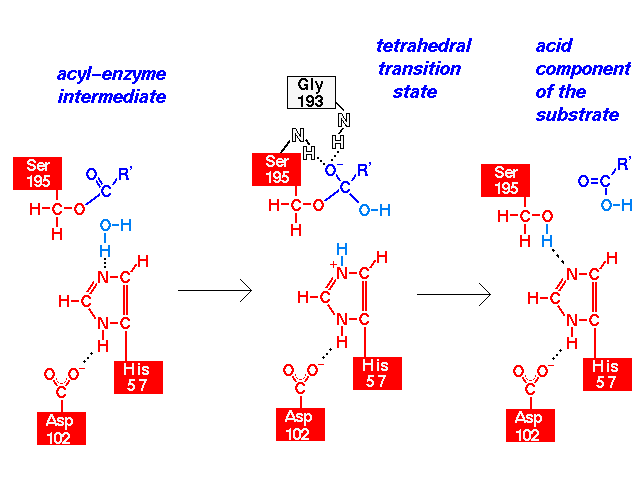 Serine Proteases Part 5
Serine Proteases Part 5
 Index
to Course Material
Index
to Course Material Index
to Section 12
Index
to Section 12 Enzymes
Index;
Enzymes
Index;  Part
4
Part
4 Part
6
Part
6
Reaction Mechanism
The model for the reaction mechanism is as follows:
(the colour scheme in the diagrams is the same as in Part
4, i.e. catalytic triad in red, main chain hydrogen bonding groups
of the oxyanion hole white, substrate/product blue)
-
Acylation step
-
Firstly, the nucleophilic OG of Ser 195 attacks the carbonyl carbon
of the scissile bond, forming the tetrahedral transition state, as described
in the section on the oxyanion hole.
The proton donated from the OG atom to His 57 is then donated to
the N atom of the scissile bond, cleaving the C-N peptide bond (or C-O
ester bond) to produce the amine and the acyl-enzyme intermediate.
The amine is that part of the substrate which follows the scissile bond
in the sequence; the acyl-enzyme intermediate consists of the remaining
fragment covalently bound to Ser 195.

-
Deacylation step
-
Secondly, the acylation step essentially occurs in reverse, but involving
a water molecule instead of the amine (which diffuses away): the water
loses a proton to His 57, and the resulting OH- nucleophile attacks the
acyl-enzyme intermediate forming another tetrahedral transition state.
The proton is then donated to the Ser OG, releasing the acid product.

 Index
to Course Material
Index
to Course Material Index
to Section 12
Index
to Section 12 Enzymes
Index;
Enzymes
Index;  Part
4
Part
4 Part
6
Part
6
Last updated 11th Jul '96
 Serine Proteases Part 5
Serine Proteases Part 5![]() Index
to Course Material
Index
to Course Material![]() Index
to Section 12
Index
to Section 12![]() Enzymes
Index;
Enzymes
Index; ![]() Part
4
Part
4![]() Part
6
Part
6

